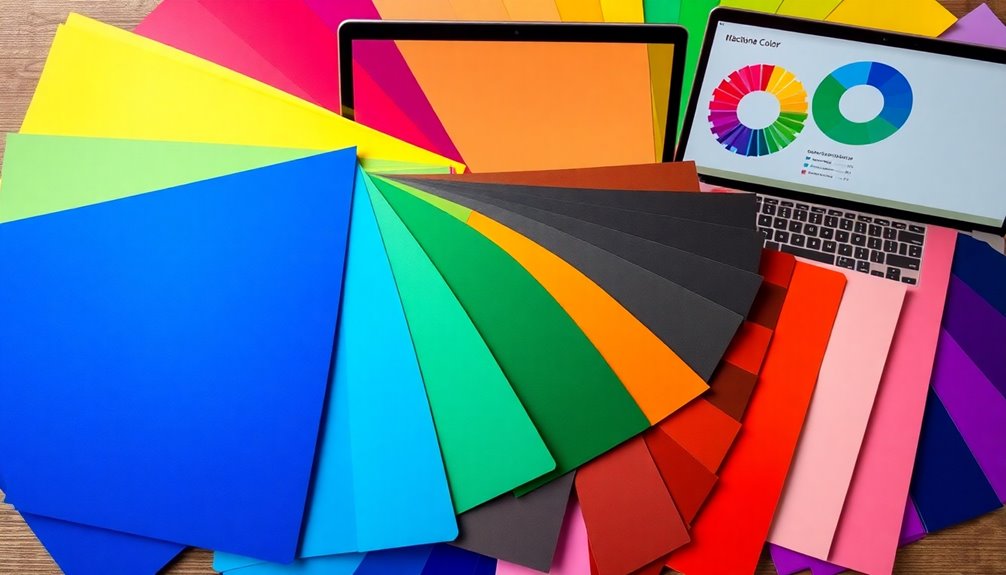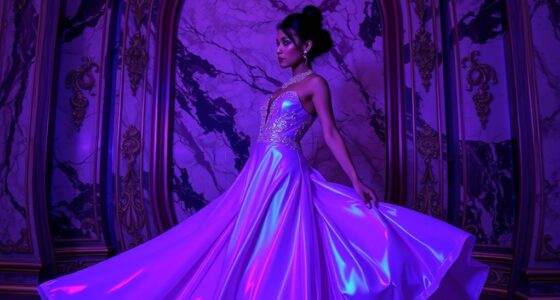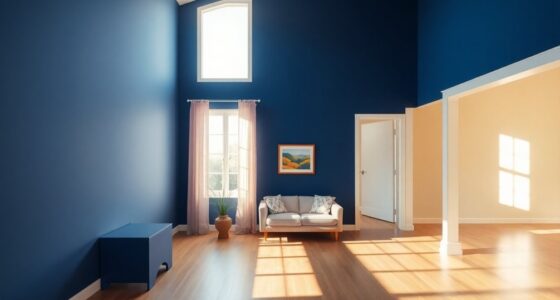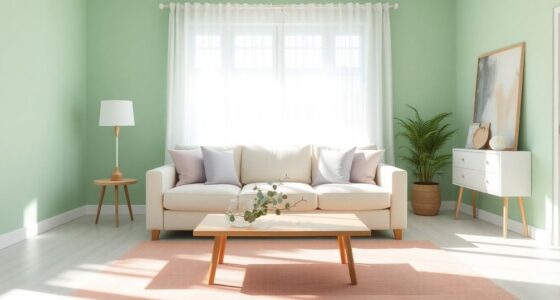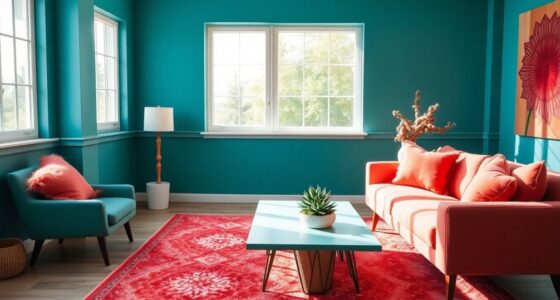Understanding color psychology is essential for designing impactful visuals. Colors evoke specific emotions—you'll find reds are passionate, while blues are calming. Warm colors like orange can energize, and cool shades like green promote balance. Remember, cultural perceptions also play a role in how colors are interpreted, so it's important to know your audience. By thoughtfully choosing colors, you can create designs that resonate deeply. Curious about how to apply this knowledge? There's much more to discover.
Key Takeaways
- Colors significantly influence emotions and behaviors, affecting up to 90% of initial impressions in design.
- Warm colors like red and orange evoke passion and enthusiasm, energizing designs and engaging audiences.
- Cool colors such as blue and green create calming, trustworthy environments, enhancing user experience and retention.
- Cultural context is crucial; colors may have different meanings across cultures, impacting design effectiveness.
- Understanding color psychology allows designers to strategically select colors that resonate with their target audience.
The Basics of Color Psychology
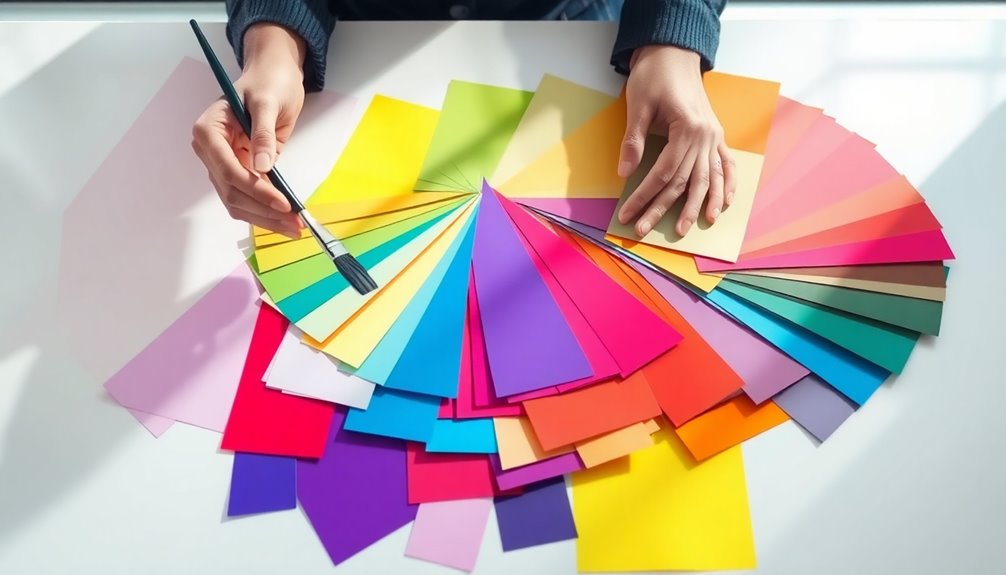
Color psychology explores how colors affect your emotions and behaviors, making it a powerful tool in design and branding. By understanding color psychology, you can create designs that resonate with your audience.
Research shows that up to 90% of initial impressions depend on color, emphasizing its importance in user experience. Each color evokes specific emotions; for instance, red ignites passion and energy, while blue instills calmness and reliability.
Additionally, consider cultural differences in color meanings—white represents purity in Western cultures but symbolizes mourning in many Asian cultures.
Emotional Impact of Colors
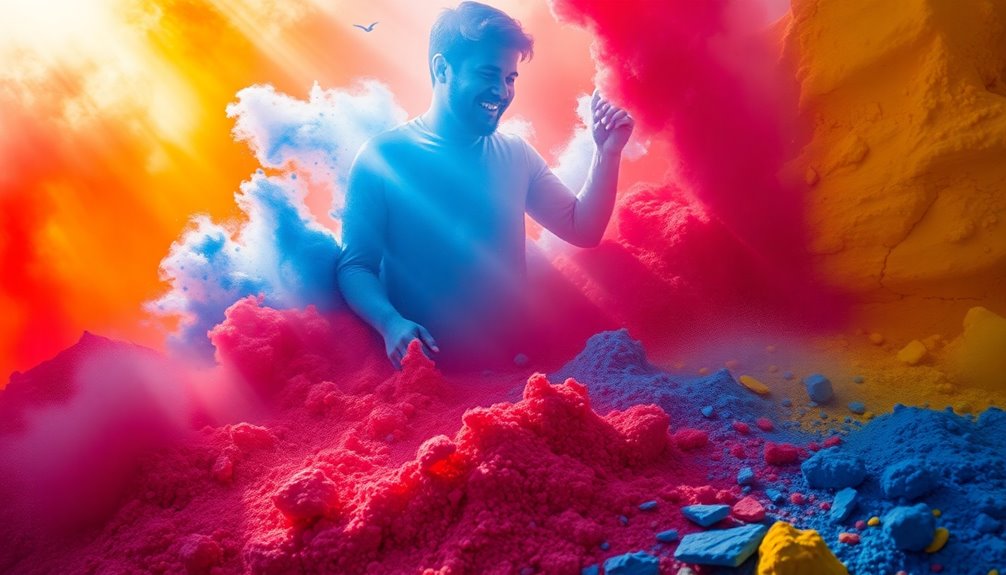
While various factors influence how we respond to our environment, the emotional impact of colors plays a crucial role in shaping our feelings and behaviors.
Color psychology reveals that colors affect us in profound ways; for instance, red often sparks passion and excitement, while blue promotes calmness and reliability. Studies show that the emotional impact of colors can even influence performance, with red leading to a 20% drop in test scores. Additionally, aromatherapy's calming effects can enhance the emotional response to colors, creating a more harmonious environment.
Cultural backgrounds also shape how you interpret colors—white signifies purity in the West but represents death in many Asian cultures.
Furthermore, context matters; a red Call-to-Action button may outperform a green one, demonstrating how the emotional response to colors can shift based on usage.
Warm Colors and Their Associations
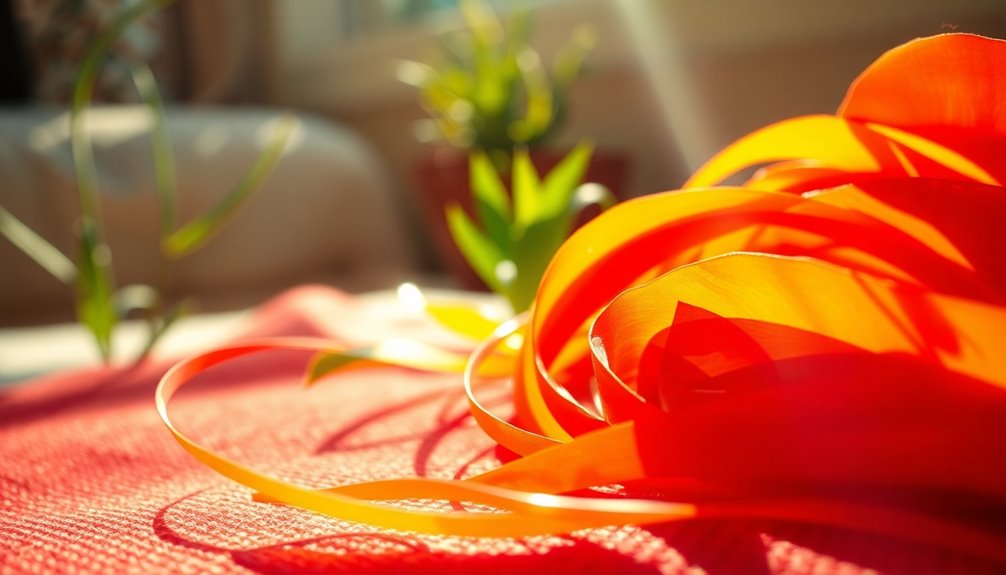
Colors can greatly influence our emotions, and warm colors like red, orange, and yellow are particularly impactful.
Understanding the psychology of color helps you design more effectively by influencing user behavior. Here are three key associations of warm colors:
- Red: Evokes passion and intensity but can signal danger, affecting how users react to your design.
- Orange: Represents enthusiasm and warmth, making it ideal for food and beauty sites to create a welcoming atmosphere.
- Yellow: Signifies happiness and positivity, but too much can overwhelm, leading to frustration.
Incorporating these warm colors thoughtfully can energize your designs and positively engage your audience, creating an inviting and stimulating experience. Additionally, using warm colors in design can enhance user engagement and draw attention to key elements.
Cool Colors: Calming Effects

When you want to create a serene atmosphere, cool colors like blue and green can be your best allies. These hues are often associated with calmness and tranquility, making them perfect for spaces designed for rest and focus.
Blue, for instance, conveys trust and reliability, which is why many tech companies use it in their branding. Green represents nature and renewal, promoting feelings of freshness and balance, ideal for health-related contexts.
Research shows that cooler shades, like light blue, can reduce anxiety and enhance user experience by creating a soothing environment. Additionally, incorporating mindfulness practices into your design can further enhance the calming effects of these colors.
Utilizing purple can add a touch of creativity and luxury, making your designs both sophisticated and imaginative while still benefiting from the calming effects of cool colors.
The Role of Neutrals in Design
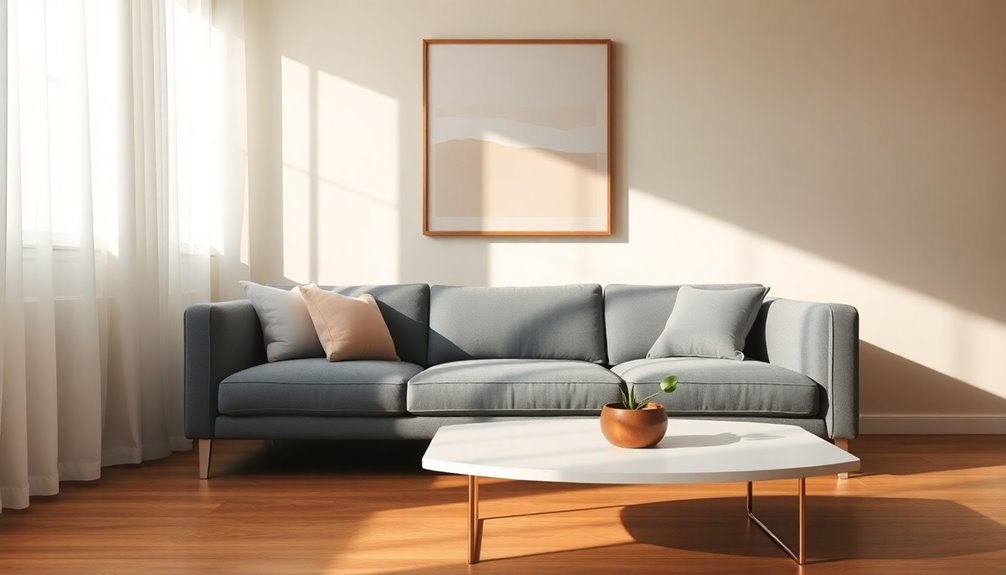
Creating a tranquil space often hinges on the choice of colors, but the role of neutrals shouldn't be overlooked. Neutrals provide essential backdrops in design that enhance visual communication and allow other colors to shine.
Here are three key reasons to incorporate neutrals in your designs:
- Balance: Neutrals like gray and beige can ground your palette, preventing brighter colors from overwhelming the viewer.
- Sophistication: Black and gray exude elegance and professionalism, making them ideal for luxury branding and corporate environments.
- Warmth: Brown and beige evoke feelings of reliability and comfort, creating an inviting atmosphere.
Cultural Considerations in Color Interpretation
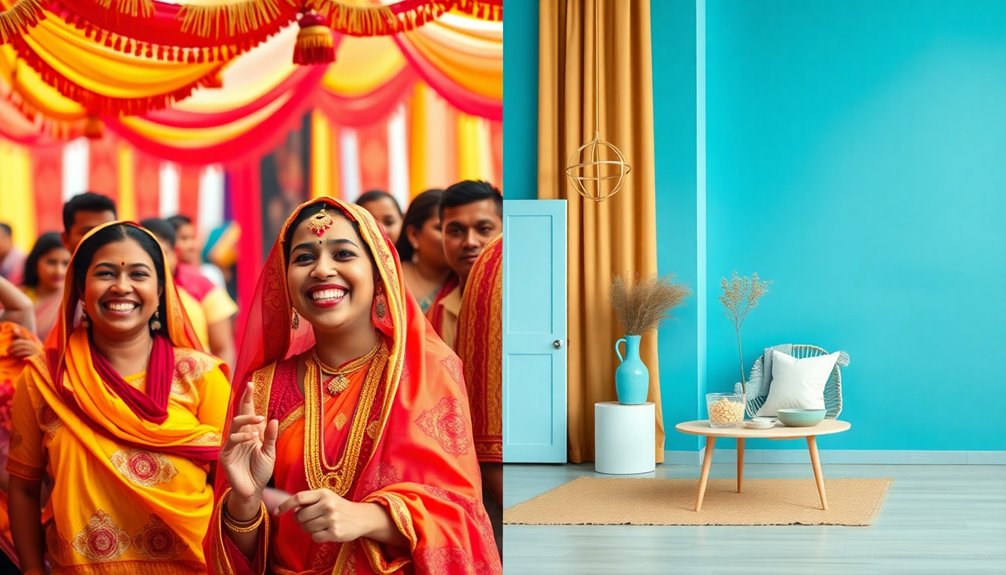
Understanding the nuances of color interpretation across cultures is essential for effective design. You need to recognize that cultural differences shape how colors are perceived.
For instance, while green often symbolizes nature and growth worldwide, in some Middle Eastern cultures, it represents fertility and good fortune. Similarly, red can signify luck in Chinese culture, but in certain African traditions, it may indicate mourning.
These psychological effects of colors can greatly influence your audience's response to your work. If you're not aware of these cultural implications, you risk misinterpretation.
To connect authentically with diverse audiences, make sure your color choices align with the meanings they hold in various cultures. This understanding will enhance your design's impact and resonance.
Practical Applications of Color Psychology in Design
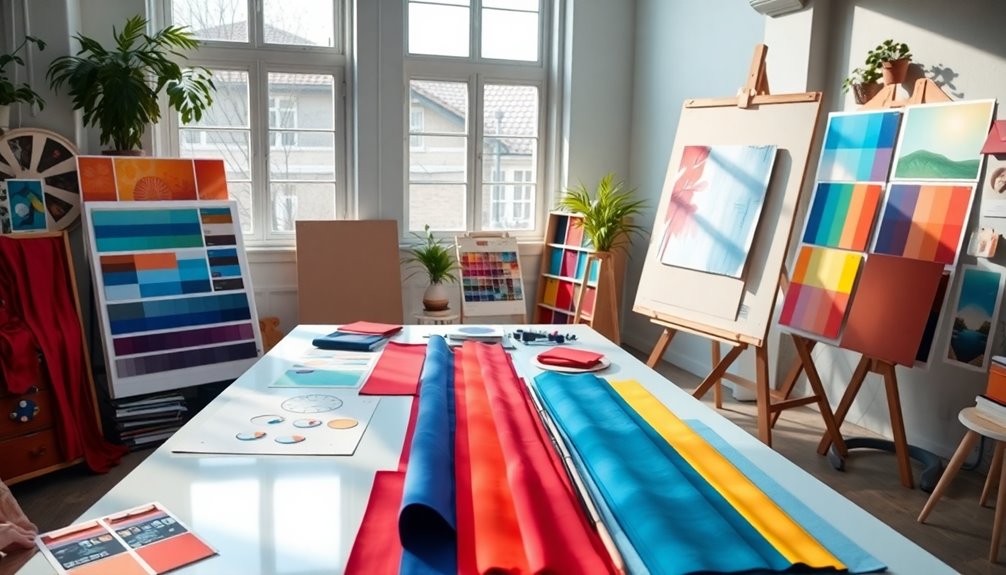
When it comes to design, choosing the right colors can greatly influence how people feel and react.
You'll want to take into account emotional impacts and cultural sensitivities to create a design that resonates with your audience.
Color Selection Strategies
Three key strategies can elevate your color selection process in design, making it more effective and engaging.
- Use the 60-30-10 rule: This guarantees a balanced design with 60% dominant color, 30% secondary color, and 10% accent color for visual harmony.
- Test color combinations: Experiment like Google with A/B testing to find the shades that optimize user engagement and call-to-action effectiveness.
- Consider cultural backgrounds: Understand that colors have different meanings across cultures—red might symbolize happiness in one culture and mourning in another.
Emotional Impact Considerations
Color selection strategies lay the groundwork for effective design, but the emotional impact of colors shapes how users interact with your project. Understanding color psychology is vital, as different hues evoke specific emotional responses.
For example, blue fosters calmness and trust, while warm colors like red and yellow can stimulate appetite and excitement. These reactions greatly influence user behavior; studies show red buttons can outperform green ones by 21% in conversion rates.
However, you must also consider cultural context, as colors can hold different meanings across cultures. For instance, white symbolizes purity in the West but mourning in many Asian cultures.
Cultural Sensitivity in Design
Understanding cultural sensitivity in design is essential for creating effective and engaging user experiences.
Different cultures attribute distinct meanings to colors, so it's vital to take into account these associations in your design choices.
Here are three key points to remember:
- Color Meanings: Recognize that white signifies purity in the West but mourning in many Asian countries.
- Cultural Celebrations: Use red to symbolize good luck and prosperity in Asian cultures, especially during festive times.
- Emotional Responses: Understand that blue evokes trust and calmness, making it a smart choice for tech brands like Facebook and Twitter.
Additionally, incorporating data-driven insights from various cultural backgrounds can help refine design strategies and enhance user engagement.
Frequently Asked Questions
How Does Using Color Improve Design?
Using color in design enhances your work by influencing how users perceive and interact with it. It can grab attention, evoke emotions, and guide user behavior.
By ensuring high contrast between text and backgrounds, you'll improve readability and accessibility. Consistent color schemes build brand recognition, making your design more memorable.
Ultimately, strategic color choices help create a more engaging and effective user experience, driving better interactions and satisfaction with your design.
What Is the Impact of Color Psychology in Graphic Design?
Color psychology plays an essential role in graphic design by influencing how you perceive and interact with visual elements. It affects your emotions and behaviors, impacting your overall experience.
For example, using warm colors can create urgency, while cool colors can evoke trust. By strategically choosing colors, you can enhance brand recognition and improve readability.
Ultimately, the right color choices can greatly boost engagement and conversions, making your design more effective.
What Is Color Theory for Designers?
Color theory for designers is all about how colors interact and influence perceptions.
You'll use the color wheel to create harmonious palettes, balancing primary, secondary, and tertiary colors.
The 60-30-10 rule helps you distribute colors effectively across your designs, ensuring visual appeal.
How to Use Color Psychology in Interior Design?
To use color psychology in interior design, start by selecting colors that reflect the mood you want to create.
For energetic spaces, opt for warm colors like red and orange. For relaxation, choose cooler shades like blue and green.
Apply the 60-30-10 rule to maintain balance.
Don't forget to assess cultural meanings of colors, as they can influence how your space feels.
Experiment with different combinations to see their effects on your mood.
Conclusion
By understanding color psychology, you can elevate your design projects and connect more deeply with your audience. Each color evokes specific emotions, whether it's the warmth of reds and yellows or the calming presence of blues and greens. Don't forget the power of neutrals and cultural interpretations, as they can greatly impact your design's effectiveness. So, when you choose your palette, consider the feelings and associations you want to evoke for a more compelling result.
